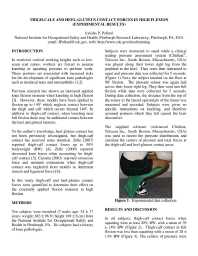Mining Publication: Thigh-Calf and Heel-Gluteus Contact Forces in High Flexion: Experimental Results
Original creation date: August 2009
Thigh-calf and heel-gluteus contact forces act in the anterior direction of the shank, thereby extending the knee and reducing the applied flexion moment. These forces act to stabilize the knee in high flexion and may significantly affect calculations in computational knee models. Traditionally, segment contact forces have been neglected from biomechanical models. The complexity of modeling tissue deformation and pressure distributions may discourage researchers from considering these inputs. However, the magnitude of these forces were shown to be quite large, >30% BW and the moments produced by these contact forces may decrease externally applied flexion moments by as much as 9% BW*Ht. In the future, biomechanical models should account for the thigh-calf and heel-gluteus contact as neglecting these forces may result in erroneous force and moment estimations.
Authors: JP Pollard
Conference Paper - August 2009
NIOSHTIC2 Number: 20035944
Proceedings of the 32nd Annual Meeting of the American Society of Biomechanics, August 26 - 29, 2009, State College, Pennsylvania. Newark, DE: The American Society of Biomechanics, 2009; :1-2
See Also
- Demands on the Knee During Kneeling and Squatting Activities Common to Low-seam Mining
- Development and Evaluation of Prototype Kneepads for the Low-Seam Mining Industry
- Electromyography of the Thigh Muscles during Lifting Tasks in Kneeling and Squatting Postures
- Evaluation of Muscle Activity, Forces, Stresses, and Moments at the Knee During Kneeling and Squatting Tasks
- Forces and Moments on the Knee During Kneeling and Squatting
- Physical Strength Assessment in Ergonomics
- Pressure Distribution on the Anatomic Landmarks of the Knee and the Effect of Kneepads
- Pressures Applied to Anatomical Landmarks of the Knee While in Kneeling Postures
- Task-Specific Postures in Low-Seam Underground Coal Mining
- Working in Unusual or Restricted Postures
- Page last reviewed: 9/21/2012
- Page last updated: 9/21/2012
- Content source: National Institute for Occupational Safety and Health, Mining Program


 ShareCompartir
ShareCompartir
